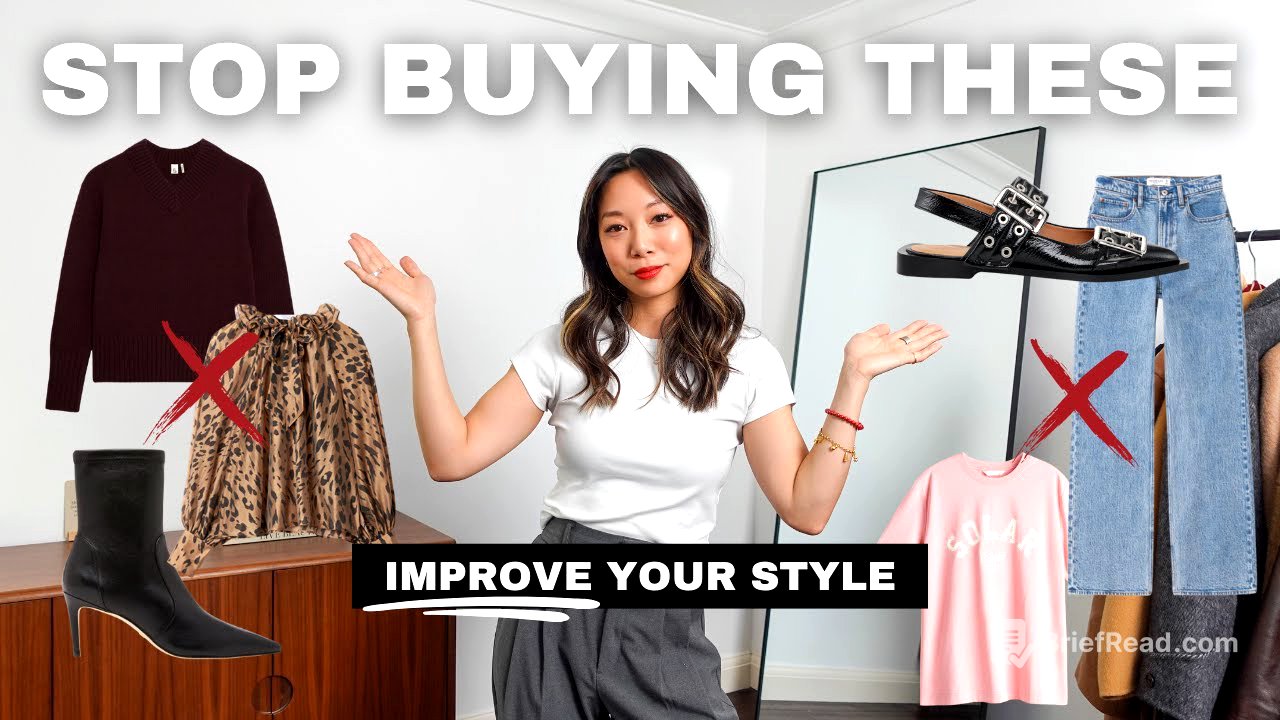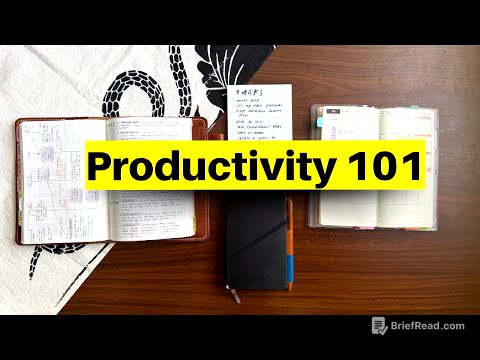TLDR;
Adeline Loke discusses common wardrobe mistakes and offers advice on how to avoid them. She emphasises mindful purchasing habits, such as avoiding buying similar items, only buying items you love, balancing trends with basics, and being wary of impulse shopping, especially during sales. She also touches on the importance of comfortable shoes and being selective when buying pre-loved or vintage items.
- Avoid buying the same items in different variations.
- Only purchase items that you truly love and that fit well.
- Balance trendy pieces with wardrobe essentials.
- Be mindful of impulse shopping, especially during sales.
- Prioritise comfortable shoes.
- Apply self-restraint when buying pre-loved or vintage items.
Stop Buying the Same Things in Different Fonts [0:11]
The author shares her experience of owning four similar blue and white striped shirts, highlighting the issue of buying multiple variations of the same item. While it seems logical to buy variations of something you like, it can lead to decision fatigue and outfits that feel repetitive. She suggests analysing what you truly like about the original item before buying similar versions. In her case, she realised she liked the oversized fit and button-down style of the shirt, not necessarily the blue and white stripes. This realisation led her to buy oversized shirts in different colours and patterns, creating more variety in her wardrobe.
Stop Buying Items That You Don't Love [2:17]
The author stresses the importance of loving every item in your wardrobe. She admits to previously buying a lot of low-quality, fast-fashion items. Now, she focuses on replacing those items with better quality pieces that she truly loves. When considering a new item, she evaluates its composition, quality, colour, and cut. If anything is not perfect, she doesn't keep it. She shares an example of a burgundy jumper she loved everything about except for the length. Despite loving everything else, she decided not to keep it because she knew the length would bother her. She encourages viewers to be picky about what they keep in their wardrobes to make getting dressed easier and more enjoyable.
Stop Buying Only Trends or Only Basics [5:14]
The author discusses the importance of balancing trendy pieces with wardrobe basics. A wardrobe full of only trendy items can lack cohesion and essential pieces, while a wardrobe full of only basics can be uninteresting and not showcase your personality. She suggests a 70/30 split, with 70% being wardrobe essentials and 30% being statement or trendy pieces. She shares that she used to focus heavily on basics but has since incorporated more colour and fun pieces into her wardrobe. Because she has a strong foundation of basics, it has been easy to add statement pieces and create more interesting outfits.
Stop Buying Something Just Because Your Favourite Content Creator Has It [7:24]
The author acknowledges that social media can be a source of inspiration but warns against buying something simply because a content creator has it. She advises ensuring that you genuinely like the item, that it fits well with your wardrobe, and that you would buy it regardless of who else owns it. She suggests using the "cut off the head" trick, where you crop the head out of an image of someone wearing the item. This helps eliminate bias towards the person and allows you to focus on whether you truly like the item itself.
Stop Buying Uncomfortable Shoes [9:02]
The author emphasises the importance of comfortable shoes. She provides several tips for assessing shoe comfort, including ensuring enough toe space, considering the width of your feet, checking for heel rubbing, and looking for padding on the sole. She notes that flat shoes are generally more comfortable than heels and that block heels are more stable and comfortable than stilettos. The outsole should have friction to prevent slipping and should be flexible to move with your feet.
Stop Buying Items That Are Not on Your Wish List (AKA Impulse Shopping) [11:02]
The author advises against impulse shopping, especially during sales periods like Black Friday and Christmas. She highlights that marketing tactics are designed to create a sense of urgency and make you buy things you don't need. She recommends creating and maintaining a wish list to avoid feeling overwhelmed by sales. By focusing on your wish list, you can drown out the noise and avoid buying things you don't need. She believes that good purchasing habits stem from continuously editing and curating a well-thought-out wish list.
Stop Buying Items Just Because It's Pre-Loved or Vintage [12:44]
The author cautions against buying pre-loved or vintage items simply because they are secondhand. She acknowledges the temptation to buy something due to the unique nature of secondhand shopping, the feeling of fate, or the idea that you're doing something good for the planet. However, she stresses the importance of self-restraint. She shares an example of a graphic t-shirt she bought while thrift shopping in Tokyo that she has never worn because it doesn't fit her usual style. She advises considering whether you will actually wear or use the item before buying it, regardless of its secondhand status.









